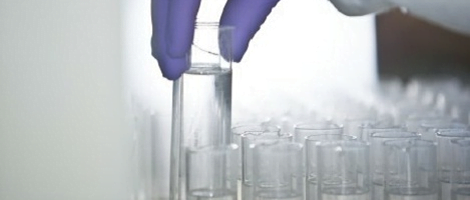Results of artificial insemination by donor depend fundamentally on the woman's age, which should not be more than 35.
Other factors may be:
- the causes for infertility
- the endometrial thickness
- the treatment used during ovulation induction
- the MSC (Motile Sperm Concentration) of the thawed sperm
Provided below is an index with the 5 points we are going to expand on in this article.
Pregnancy rates per cycle
Thus, the pregnancy rate may range from 18% up to 30% per insemination cycle:
- 1 cycle: 17-28%
- 2 cycles: 30-46%
- 3 cycles: 48- 60%
- 4 cycles: 60-75%
Pregnancy via IVF vs. IUI with donor sperm
With donor sperm, two different infertility treatments can be used:
- Artificial insemination by donor (AID): The semen is inserted manually through the vagina and placed in the uterus by cannula transfer. Should this be the technique of choice, the eggs used are necessarily from the intended mother.
- Donor-sperm IVF: Donor eggs (double-donor IVF) or own eggs can be used, obtained prior to fertilization by means of ovum pick-up (OPU). Egg insemination can be done following the conventional IVF or the ICSI method.
As for in vitro fertilization using donated sperm, no difference is observed when compared to the average patients, since only a low amount of sperm is used and the male gamete intervenes to a lesser extent in treatments such as ICSI.
On the other hand, a big difference can be seen in artificial insemination treatments if we compare between using the own gametes and donor reproductive cells. While chances of getting pregnant reach 12-15% in cases of artificial insemination by husband (AIH), those of artificial insemination by donor (AID) may rise to 18-25%.
The pregnancy rate per cycle in women under 40 is 22% approximately, while it reaches only 13% when the patient is older than 40. Age plays a major role when determining IUI outcomes, as egg egg quality diminishes dramatically over time.
Out of all pregnancies achieved by AID, 88.5% are singletons, while 11.5% of women get pregnant with multiples. Out of all the multiple pregnancies, 10.1% were twins, 1.2% triplets and 0.2% will carry more than three sacs.
After several IUI attempts, the odds for pregnancy increase, which means it is a cumulative rate. In other words, if a pregnancy is not achieved on the first cycle, the chances for it to occur on a second, third, or fourth insemination are higher.
After 4 IUI cycles, women become pregnant in 60-70% of the cases. Should the treatment still be unsuccessful, experts will recommend you to move on to IVF, as it is a more complex infertility treatment, which improves the success rates to a large extent.
In cases of double-donor IVF, embryo quality is better, since the eggs and the sperm used are more "powerful", which increases the success rate a bit. However, this depends on other factors such as female age, endometrial receptivity, the characteristics of the uterus, embryo development, etc.
FAQs from users
How many cycles with donor sperm will I need before success?
The success rates of IUI and IVF, even if donor sperm is used, rely on factors such as age, endometrial thickness and pattern, what is causing infertility and for how long, and the protocol and medications for ovarian stimulation.
In order for the specialist to find out what is leading to failure, every step taken during the process should be examined. If necessary, if the patient's response to medications was insufficient or inappropriate, the solution may be to just change the stimulation protocol or the meds to take to see whether the results change.
Moving on to another method is another option. For instance, if success has not been achieved after 3-4 attempts with IUI, patients are often recommended to give IVF with own eggs a try. If a successful pregnancy does not occur, moving to donor eggs could give you the chance to become parents.
Can Clomid increase the chances for success of IUI with donor sperm?
Clomiphene citrate, better known as Clomid, is usually prescribed for fertility cycles as a first option, given that it is a low cost fertility drug. The success rates with Clomid are usually high, as it gives patients an 80% chance of ovulating within the first 3 months.
It is an ideal medicine in the following cases: if you are over 35, overweight or underweight. You should keep in mind that dosages have an impact on the success rates. Normally, women start with a 50 mg dosage. If it does not lead to ovulation, your doctor may increase it in subsequent cycles.
We make a great effort to provide you with the highest quality information.
🙏 Please share this article if you liked it. 💜💜 You help us continue!



